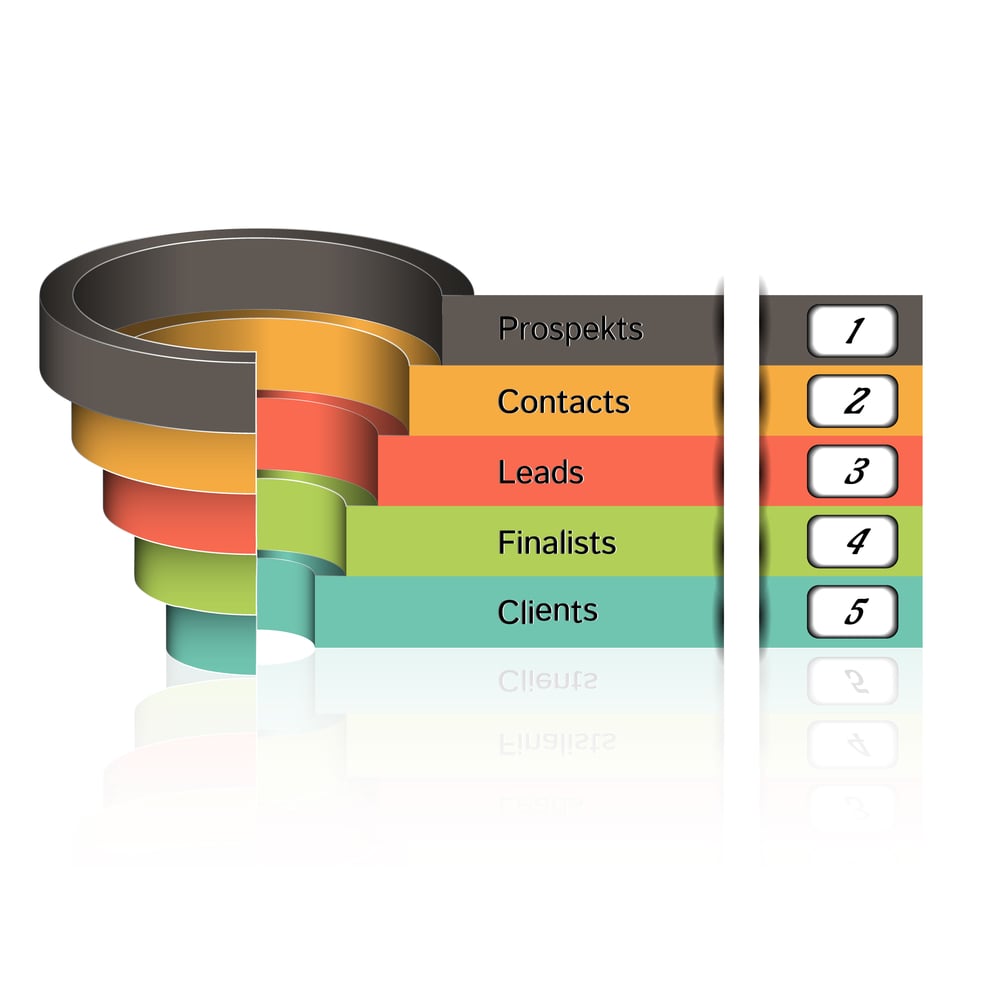Extra, extra! Read all about it! A new marketing trend is starting to take shape, and Click funnels is the ground floor for it. We're so excited to be a proud partner of ClickFunnels and learn from them on our
It might sound like one of the craziest ideas you’ve ever heard, but in the post-desktop world, it simply cannot be ignored. Your website, that one so many marketing pros and companies say you need, is probably actually hurting your conversions. In reality, no matter how well-designed, it is very possibly driving away a ton of your potential leads.
Now, I know you probably just spit your coffee out at the very thought. My website is hurting my conversion rate?! This idea runs against so much of the….Well, marketing about marketing, that you’re going to see. Look around, and you’ll find companies pushing you to set up a website and purchase hosting. Yet, all your brand needs is a sales funnel. Not only that, but your brand will thrive with only a sales funnel. And here’s why:
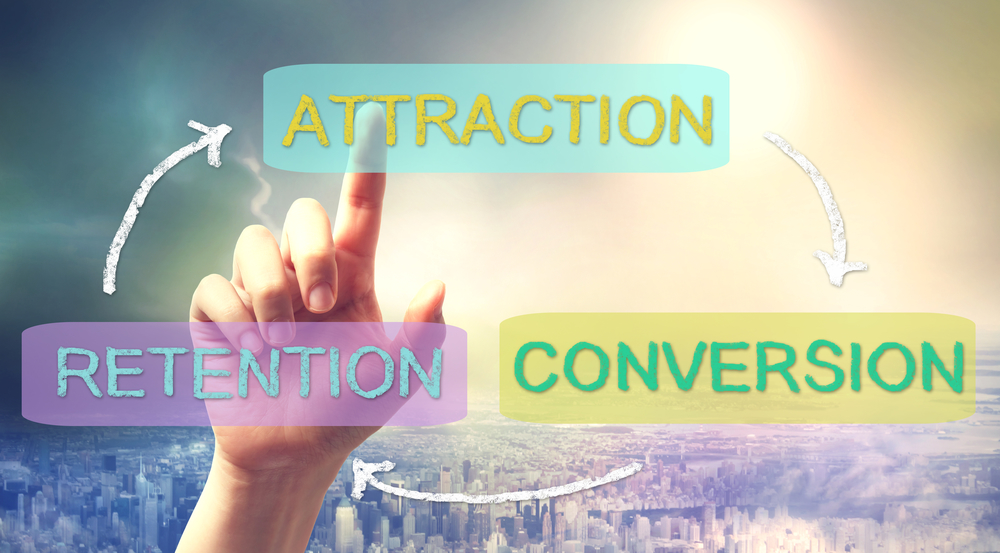
1. A Website isn’t Conversion Focused
Let me say this again: websites, at their very core, are not conversion focused. And with the numbers we’re seeing, it’s not hard to identify that a shift is needed. The process of converting leads is nowhere near as simple as it once was. And audiences across the internet are practically screaming about how frustrating it is to connect with their favorite brands online. But we have the power to change that.
Instead, a Sales Funnel is a Journey about Conversion
And sometimes, it can be a complex journey. No single website is equipped to address the context-sensitive needs of your audience. In contrast, a sales funnel puts your audience through a step-by-step progression. It filters them to the location they’re searching for, guides them with their needs in mind, and unites them with real solutions.
And There’s an End-Goal in Mind
For websites, there’s not really an end-goal in mind. Yet, especially for us Clickfunnelers, converting is the destination, every single time. And when you stop to consider it, your audience also has this in mind when they’re shopping. Just take a look at the numbers. A website is like a salesperson that’s not even trying to close the sale, while a sales funnel knows the audience craves it.
Plus, Sales Funnels are Data-Driven
Websites are mostly made to look nice. Sure, you can hire a UX designer to jazz things up a bit more. And of course, you do want your funnel elements to look nice. But at the same time, unlike a website, every step of a sales funnel can be measured, optimized, streamlined, and so much more. This gives you an incredibly powerful method to peek into exactly where and how you can boost your conversion rates.
Protip: There’s probably one big tip here. When you’re creating and honing funnels, take time out to account for how your audience interacts with every step of your funnel.
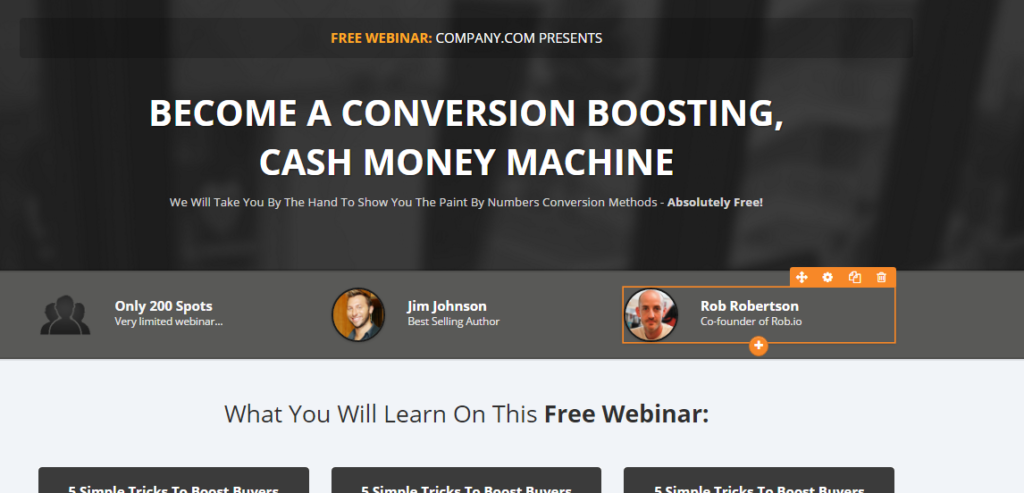
ClickFunnels lets you create engaging and professional quality pages for your funnels. With its selection of various templates, drag and drop functionality and robust editing features, you’re sure to build quality pages every single time.
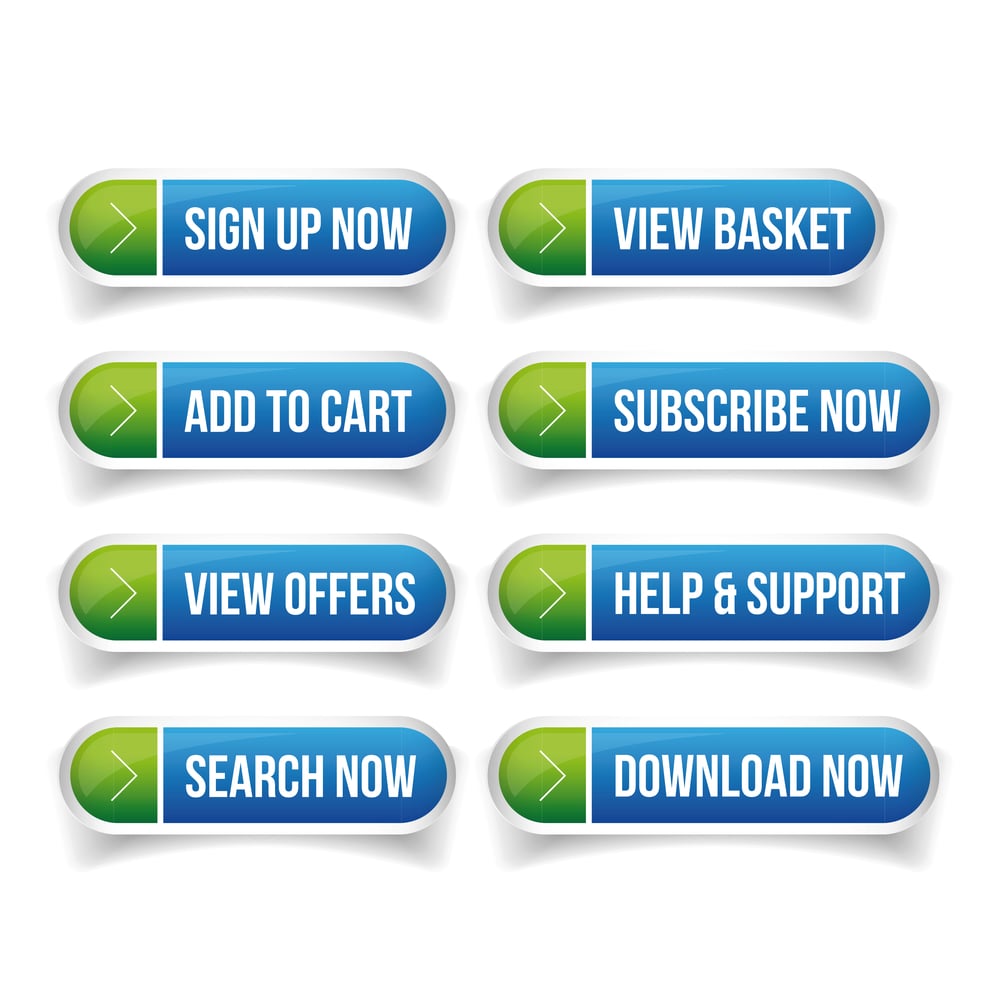
2. A Website Simply Has Too Many Calls-to-Action
Really, when a user lands on a website, they’re bombarded with different calls-to-action. We’ve seen before how important it is to craft a high-converting call-to-action. Our calls-to-action are the backbone to our conversions. But imagine yourself coming to a site and being pulled in every direction by a bunch of them. It’s like being shouted at by a million voices at once. Why don’t we quell that chatter for our audience?
A Sales Funnels Cuts the Layers of Overlapping Calls-to-Action
You’ve probably even been to websites that had so many prompts that it was like peeling back the layers of an onion. With each new call-to-action, there seems there’s another and another and another. Instead, the pieces of a sales funnel present the audience with one at a time, in an ordered way that makes sense for their experience.
And Every Funnel Call-to-Action is Aimed at You
A sales funnel is exactly what it sounds like a funnel. It’s similar to the power of retargeting. As our audience goes through the journey, they branch out and take the path that’s designed for them exclusively. As the funnel gets more narrow, every single call-to-action is a conversion machine aimed right at them and for them specifically. This approach maximizes our conversion possibilities.
Also, Sales Funnels aren’t Static
Websites are so… boring. Even when they have some nice pictures of some other glitz and glam, it’s not really about movement. But sales funnels are all about the moving forward, progressing, even enjoying the momentum. And it feels good! They’re fun, interesting, and an entire experience that your potential leads enter.
Protip: For our funnels, we want steps that present one message at a time with, ideally, one call-to-action. If you find yourself putting more than one at a time, think about breaking it out into its own piece in your funnel.
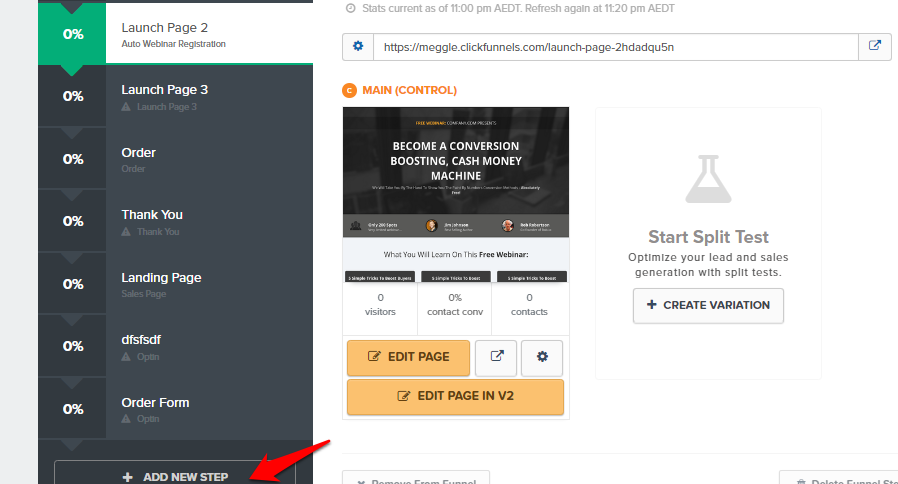
ClickFunnels lets you create multiple pages for your funnel with dedicated unique CTAs letting you avoid overcrowding one page with too much CTA. Simply click Add New Step on your funnel editor, determine what kind of page it will be, edit accordingly and you’re good to go!
3. The Majority of Content and Offers on a Website are Untrackable
At the same time, not only are there way too many calls-to-action on most websites, the problem goes even deeper. In fact, you’ll find that all that content on your website isn’t even tracking anything. This goes back to what we were saying about funnels being data-driven, but to a whole different degree. When it comes down to it, all those images and all those little pieces of content… none of it is trackable at all. On the other hand, sales funnels have this aspect under control.
Sales Funnels are Built on Tracking
You may have heard the age-old 80/20 rule in marketing. And marketers often joke that you’ll never know which 20% of your efforts are producing that 80% of your sales, not really anyway. Yet, nothing could be further from the truth for sales funnels. For every piece of content and every offer, we can break it into a new step, get our audience interacting with it, or tag it to make it trackable. If it’s not working, we can discard it at the drop of a hat.
And, We Can Adapt Our Funnels Every Single Day
Unlike websites, where you have to wade into a time-consuming project, funnels are remarkably nimble. Because websites are built on more traditional tools and approaches, the content and offers are more difficult to change. And in the high-speed world of marketing, we want flexibility, not stiffness. Want to roll in a text message blast into your funnel? Sounds good. How about an Instagram offer? Let’s make it happen!
You’re Also Able to Focus Your Audience
I like to think of a website like a poorly designed amusement park that you don’t have a real map for. People tend to feel lost, confused, and often bored. On the flip side, sales funnels are the exact opposite. With each step, we narrow their focus dead center toward our brand. And with each step, we give them an even bigger, more customized bit of fun and games. Finally, they get to the very best ride in the entire park: purchasing our product or service.
Protip: The lesson here is that stunning simplicity creates focus and boost conversions. Don’t overwhelm your leads, impress them.
![]()
ClickFunnels lets you add tracking pixels be it for Google Analytics or Facebook. Simple click Settings > Tracking Code and paste your marketing pixel.
4. Websites are Too Hard to Change If You’re Not a Designer
Or if you’re not a developer, for that matter. And in many cases, you’ll find that a good developer or designer can be hard to come by. Pivoting back to our sales funnels, though: we’re the ones at the helm. In most cases, armed with the Click funnels blog and some additional resources, you’ll also discover you can almost do whatever you like with your funnel. No complex coding involved.
It’s a wonder that some people have clung to their websites when a better alternative is available.
With Sales Funnels, You Can Really A/B Test
And You Don’t Need to Shell Out Tons of Money
You can Skip Lengthy Interviews for Your Sales Funnel
Your Sale Funnel Collects Info and Builds Prospects
You Start Actually Viewing Your Leads as Prospects
With a Funnel, You’re Also Seizing Every Opportunity
Since you don’t need a designer or developer, you can test to your heart’s content. What website owner can say that? The best part about sales funnels is that you can A/B test just about every single step too. This allows you to sharpen each piece of your funnel toward the conversion process.
And let’s be honest for a second. Designers and developers aren’t exactly cheap. And oftentimes, the projects aren’t quick either. Especially when you’re just launching your first sales funnels, every bit of revenue should be maximized to the full extent possible.
One fact remains true: talking with designers and developers to weed out unqualified candidates takes time. Lots of time. And that time could be better spent elsewhere, like tweaking your sales funnel until it’s a growth engine for you and your brand.
Protip: Now, you might still want to hire a digital assistant or two to aid you in your funneling. And if you decided to do this, these interviews are often quicker and more straightforward.
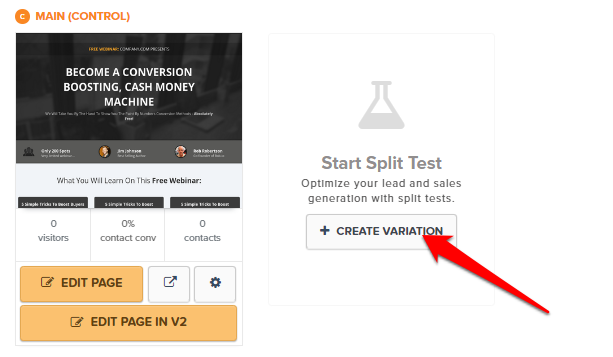
Create variations for your pages in your funnel and split test. With ClickFunnels, optimizing your pages is made easy!
5. A Website Doesn’t Build A List Of Prospects
Potential leads. In marketing, we want to convert as many of them as possible. Most people know that a website has an audience. Maybe they even watch their live Google Analytics as people browse their site. Doing so might be fun, especially for new marketers, but just because you’re getting visitors, doesn’t mean you’re able to use your site to compile a list of prospects. Instead, these people come, and they go. You can retarget them a little, but that’s about it.
Cue the defender of our lead conversion strategy: the ever-reliable sales funnel.
With every step giving us more insight into our leads, we’re going beyond traditional marketing. Websites just can compete in this realm. During the funnel process, we’re learning about our leads’ values, desires, and what triggers their actions. Meanwhile, we’re collecting all this information and plenty more.
An audience is nice, but prospects are better. Sure, you might have something to say, specifically for your content marketing on your blog. But having an audience isn’t the primary purpose. When you shift to using sales funnel exclusively, you start understanding that your leads don’t want to be talked at. Instead, they’re people with the desire to make purchases for their lifestyle.
If a website has a high bounce rate, people aren’t sticking around very long. And with about 50% of website visitors only visiting a site one time, you’ll start to see just how many opportunities are being completely wasted. Yet, the exact opposite is true for sales funnels. If we recognize an underserved group of leads in our funnel… we branch out our funnel. We don’t let them just pack up and go; we adapt and convert!
Protip: If you aren’t yet centralizing your prospects, now’s the time to start. Your sales funnels will definitely benefit from doing so.
Are you starting to see what I mean? But I’d love to hear from you.
What are the greatest benefits you’re seeing from funnel building?
Start writing here...



